This article is part of the 31 Days of Pinterest Hacks series. Find the main page for this series here.
It’s easy to find a multitude of playdough recipes on Pinterest. From a therapeutic perspective, I know playdough is terrific for developing the nervous system and tactile stimulation. From a parental perspective of a child who cannot tolerate the texture of playdough, I can’t help but feel defeated with its use in our homeschool activities. While I don’t have definitive solutions for my son yet, this post offers suggestions for using playdough with a neurodivergent or disabled child based on what I’ve already tested.
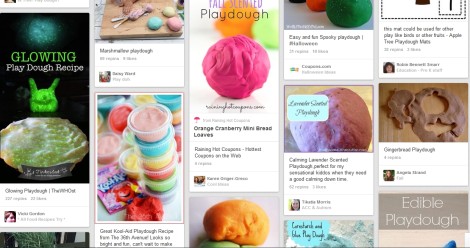
I love the different options for playdough play on Pinterest. If only …
Why playing with playdough may be a challenge for neurodivergent or disabled children
- Children with tactile sensory aversions may not be able to tolerate the texture of playdough.
- Some playdough brands come in various scents, which may cause sensory defensiveness in some children.
- Playdough is a choking hazard for a child who still mouths objects.
- Children requiring fine motor support may find manipulating playdough a challenge.
Suggestions for adaptations/modifications for playdough play
- Test out a variety of different playdough brands. I tried them all in a desperate attempt to find playdough my son could tolerate. I made my playdough; I bought the traditional brand, a scented brand, and beeswax modelling clay. The homemade version made my son gag from day one; it was too soft. The traditional brand is slightly harder, but it crumbles easily, and I worry about the bits going into his mouth. The scented brand is very soft but harder than the homemade version. I thought he would love that one. The first thing he did was put a piece in his mouth. Then, when I removed it in a panic (how did he get that in there with me watching?), I insisted on placing his hands over the ball (without his consent) and pushing down. He had a very harsh reaction. I felt so guilty about having done that to him and do not recommend ever forcing anything on a child. The only dough he doesn’t mind touching is the beeswax. It’s harder than the rest, but that makes it impossible for him to manipulate. He only touches it with his fingers and palms of his hand. Also, beeswax hardens quickly, which frightens me in terms of mouthing even if I’m supervising like an eagle. I ensure that the pieces we work with are large.
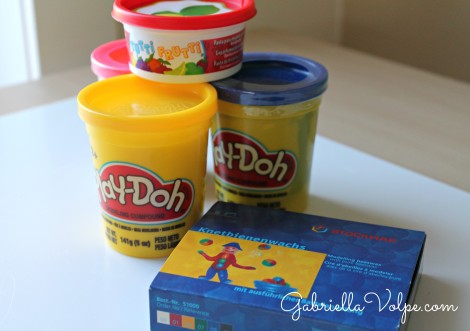
I’ve tried almost everything on the market.
- Use tools. My son can better tolerate the playdough experience when he doesn’t have to touch it. However, he has a good memory. He will gag just by looking at the dough that had him react in the first place.
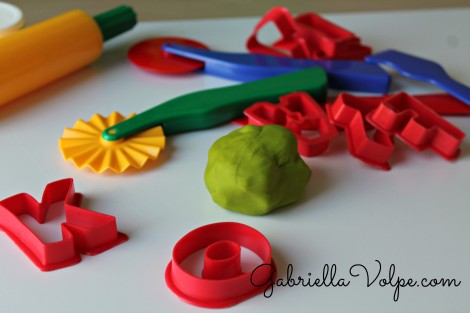
Tools for playdough play include cutters, rollers, and shape cut-outs.
Adapting Playdough Play – Free!
Simple ideas to adapt playdough play for neurodivergent and disabled learners.
Sign up to have FREE download delivered straight to your inbox!
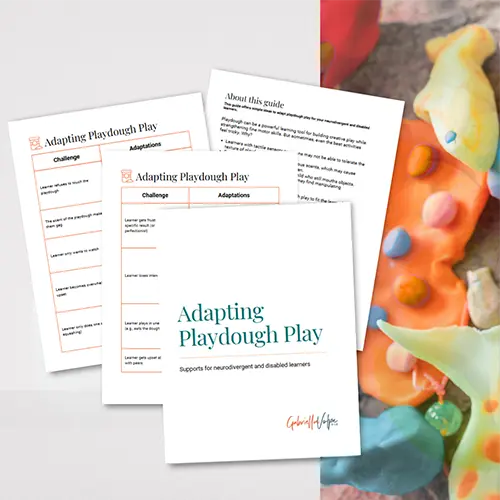
By signing up, I’ll also add you to my mailing list. You can unsubscribe at any time.
- Cover up the dough. By placing the playdough in a sealed plastic bag, my son can tolerate the mashing of the dough (hand-over-hand, with consent). The gag reflex does not kick in—so I know I can continue using this trick. Another tip is to place it under fabric, so they don’t see it but only feel it through another texture they don’t mind touching.
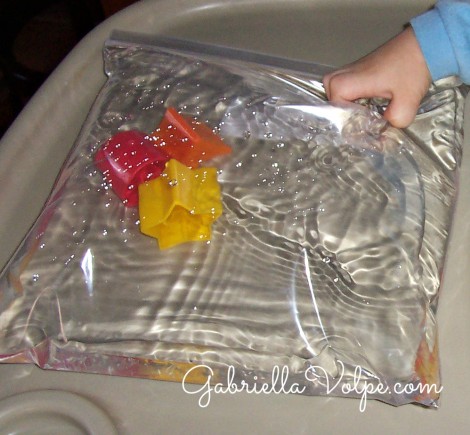
I exposed him to different textures from when my son was really young. This is a bag filled with water and some of his familiar toys. As he grasped for them, he experienced the squishy water in the bag. This also exposed him to the plastic texture of the bag, which made the next step a little easier to handle over time.
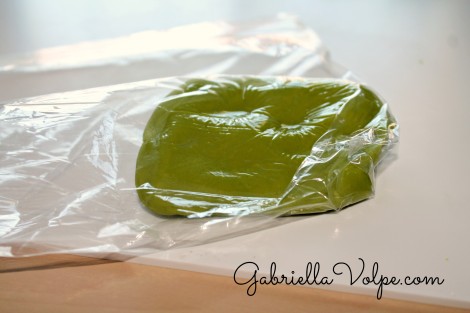
Playdough in a sealed plastic bag makes it easier for some children to touch the playdough, even if the play is limited.
- Avoid scented playdoughs. Especially for a first-time exposure to playdough, avoid the scented varieties. Touch and scent together make it difficult to figure out what a child doesn’t like about the dough. Is the scent? Or is it the texture?
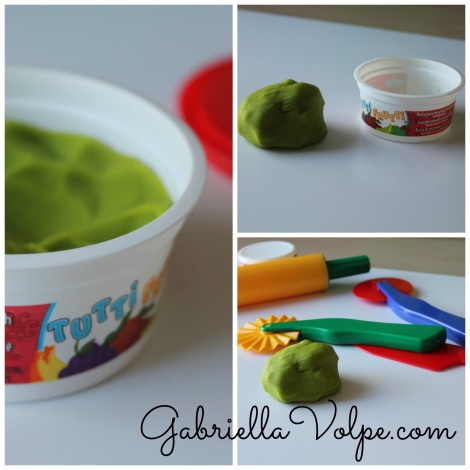
This is lime-scented playdough. While I love the scent, I can’t be sure if this also adds to the gag reflex for my son.
- Play around with the homemade recipe. In playing around with the homemade recipe, I can make it harder by adding more flour. It’s also odorless. My son still doesn’t accept touching it without the bag over it. The homemade recipes allow you to eventually add scents that a child is already familiar with. Only add pure essential oils or herbs once you know a child can accept them.
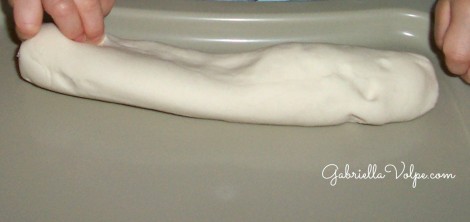
Homemade playdough. You can find many recipes pinned on Pinterest.
- Slow exposure. My biggest mistake was expecting my son to play with playdough the first time—just like other kids might. I had him play with it almost daily for a while. I know that slow and steady wins the race. I might expose him to it one week, skip two weeks, try the third week again and so on. Also, I test out one thing each time—never expecting him to touch it fully.
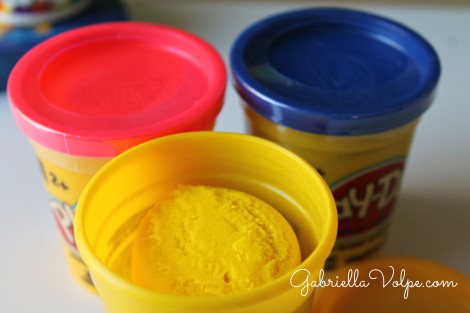
This is a popular brand that reminds me of … playdough. I don’t know how else to describe the strong scent this gives off. It is much harder than the one pictured above.
- Incorporate language. If the child has no problem touching playdough, then you have many things you can do with them! Talk about the colors, name the shapes, and have them sculpt the animals they know the names of.
- Incorporate fine motor practice. In playing with the beeswax modelling clay myself one night, I realized how much of a workout the hands get. For a child who needs to build their hand strength, have them squeeze the ball of dough, roll it, flatten it, pinch it, pull it, pound it, and model it into story characters or family members.
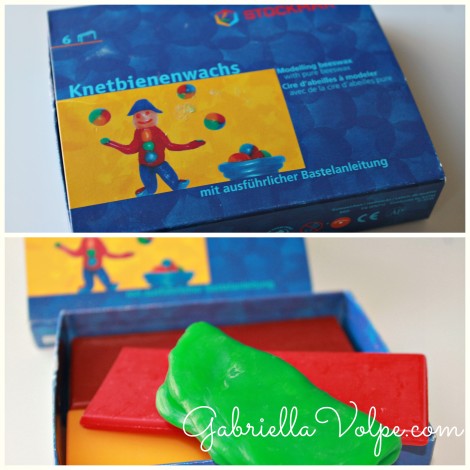
This is beeswax modelling clay. It’s pliable but much more difficult to manipulate. A child needs to have pretty good hand strength to use this one. The colors are vibrant, and the natural beeswax scent is soothing. It’s glossy when moulded, and it retains warmth while it’s in your hand. It’s quite the experience to handle.
Let go of this activity if the child can’t handle playdough, no matter how many gentle experiences are provided. Find other ways for them to build dexterity and coordination in their hands. Never force them to do something they are uncomfortable with.
What additional tips can you offer for making it easier for a child to play with playdough?
Are you enjoying the ideas in this series? We can get more in-depth in a one-on-one consultation.

Good luck with the playdough!
Did you have any better luck with actual dough when making a pizza or pie in the context of a kitchen activity?
Unfortunately, no. The homemade dough irritates him just as much as the playdough. *sigh*